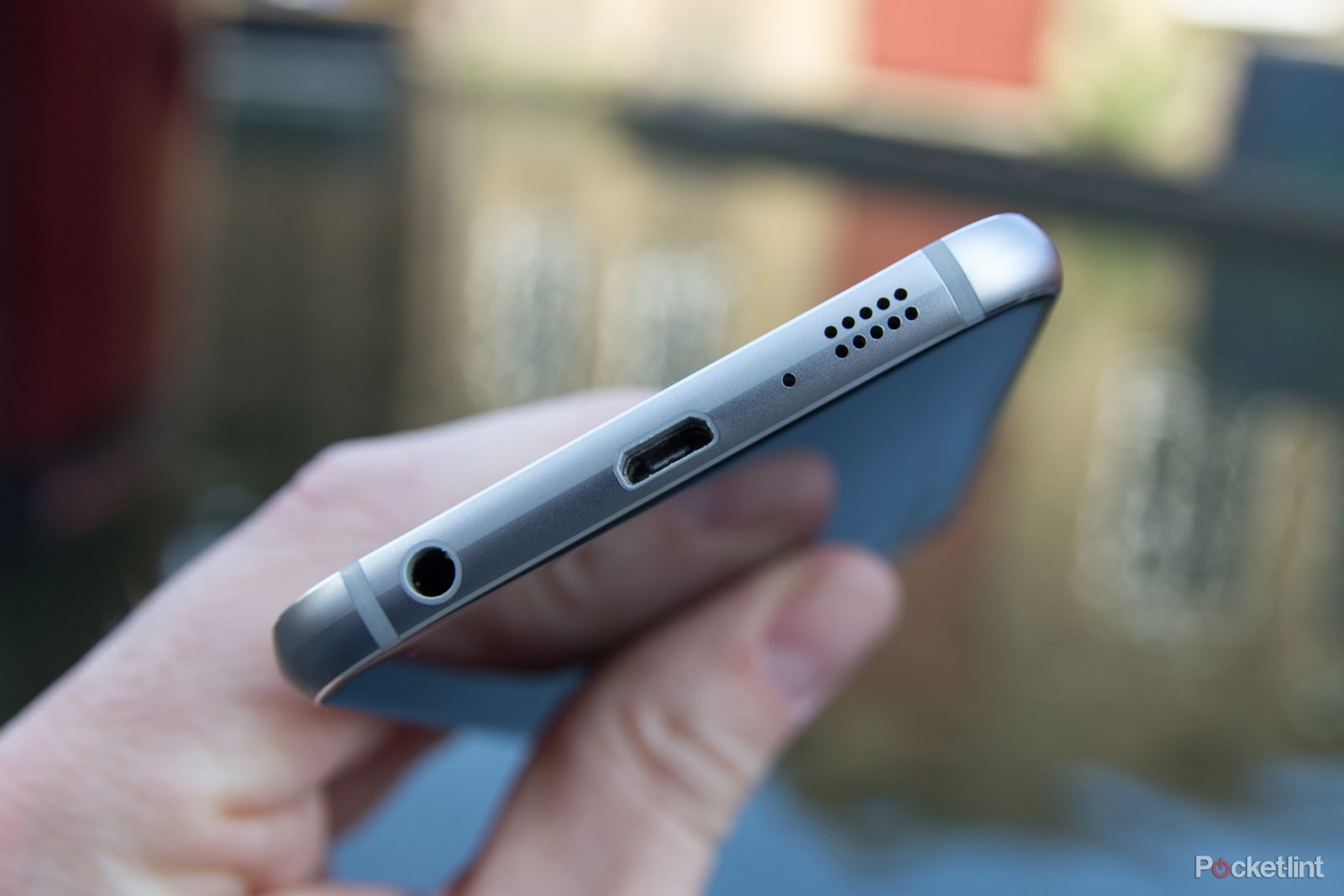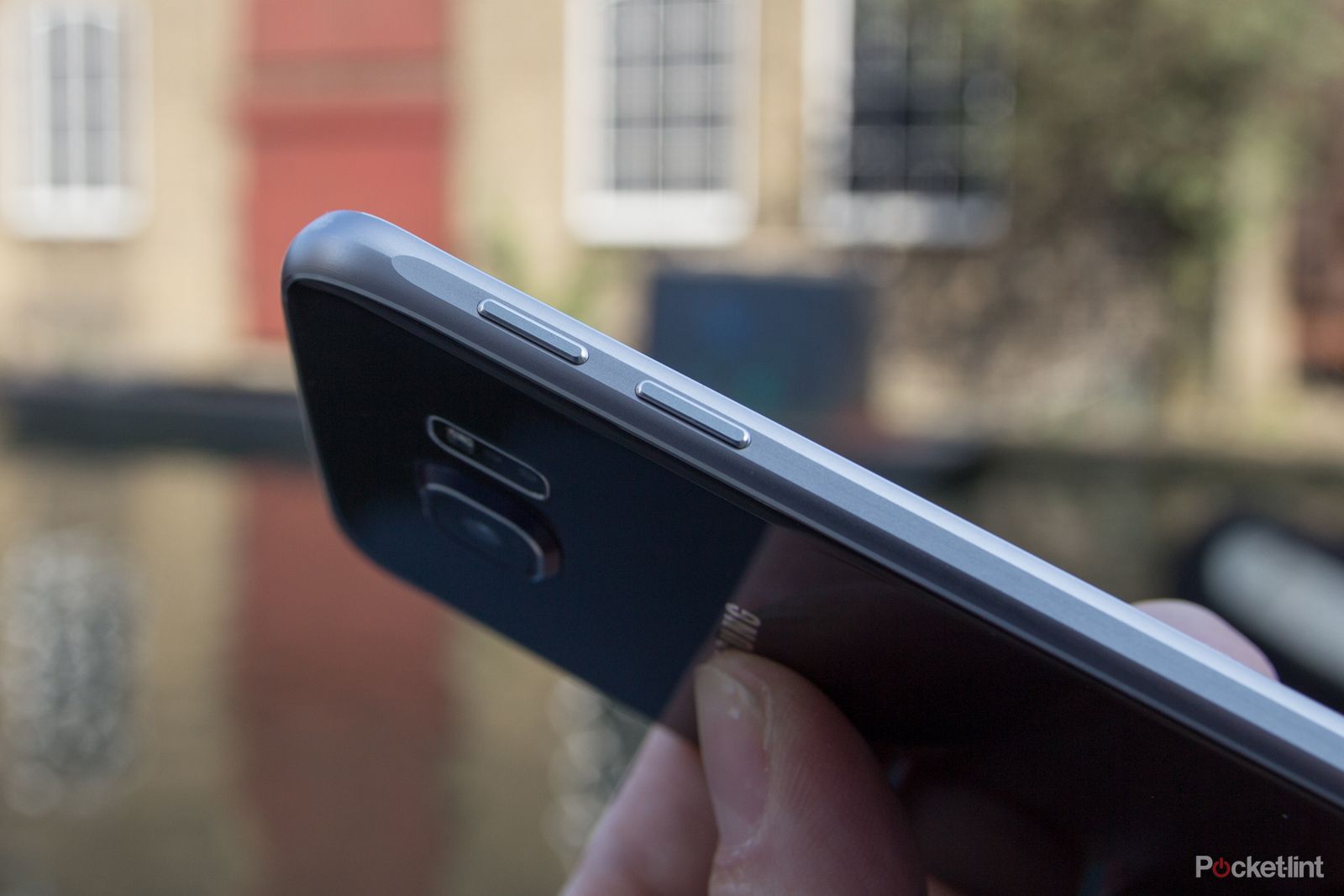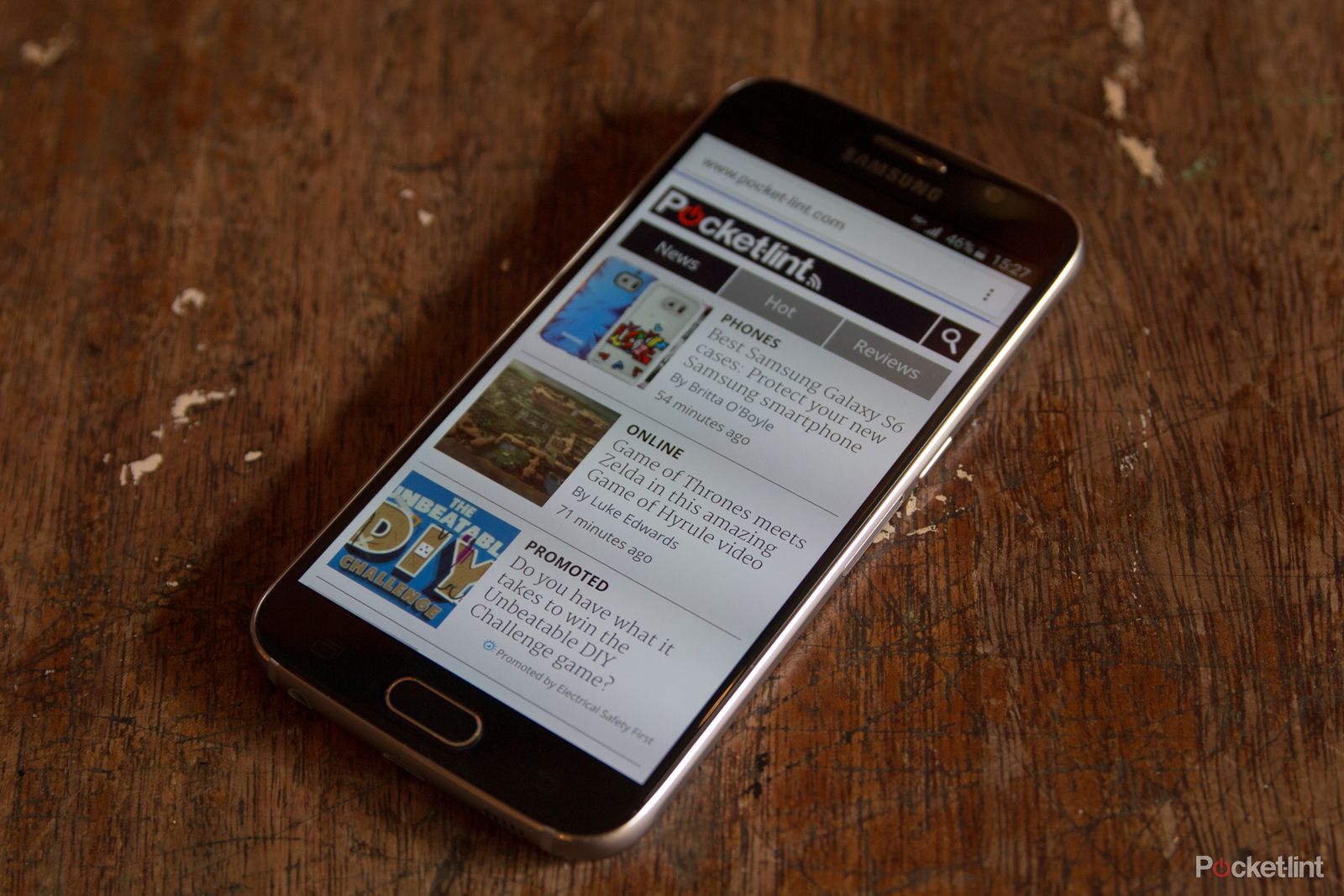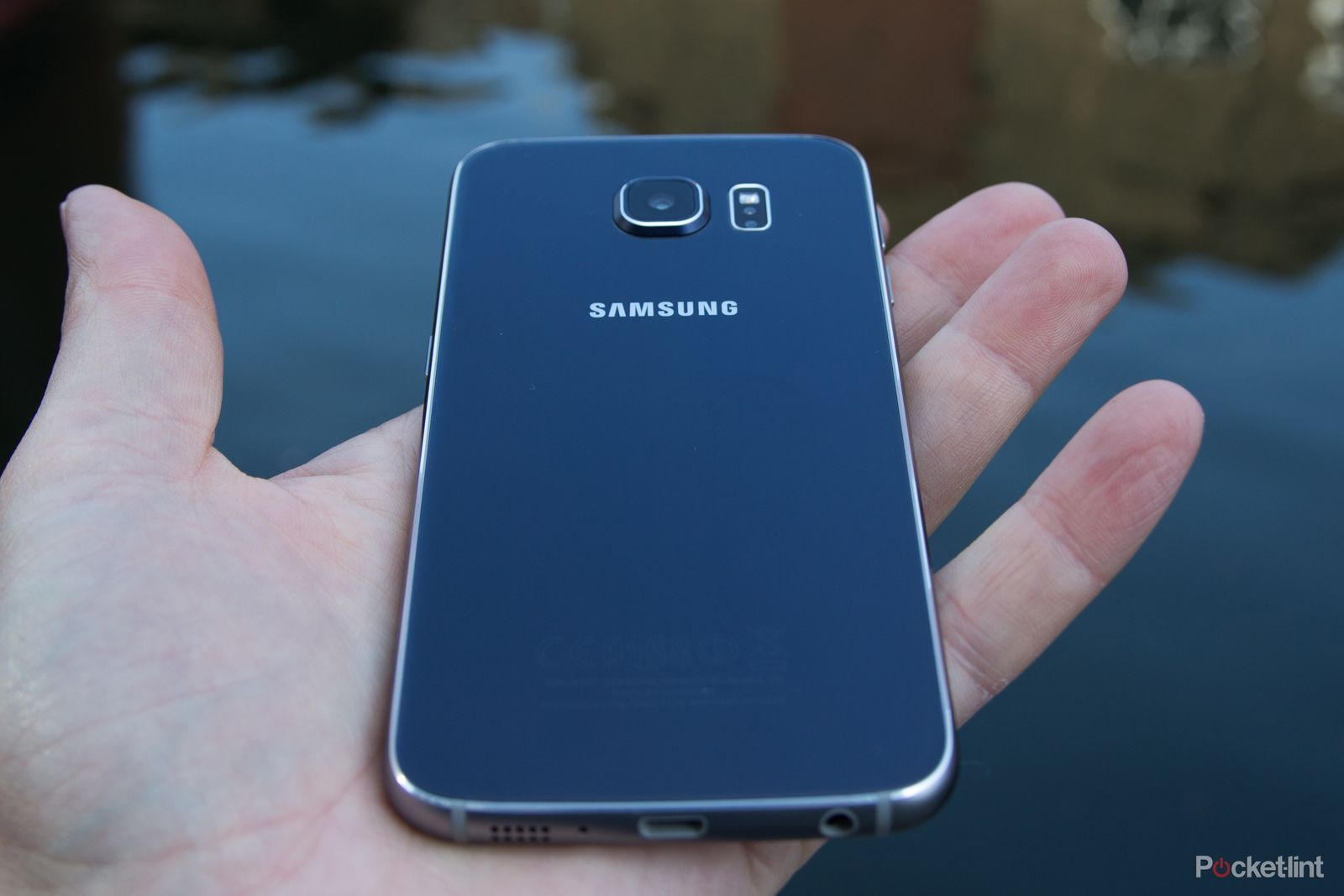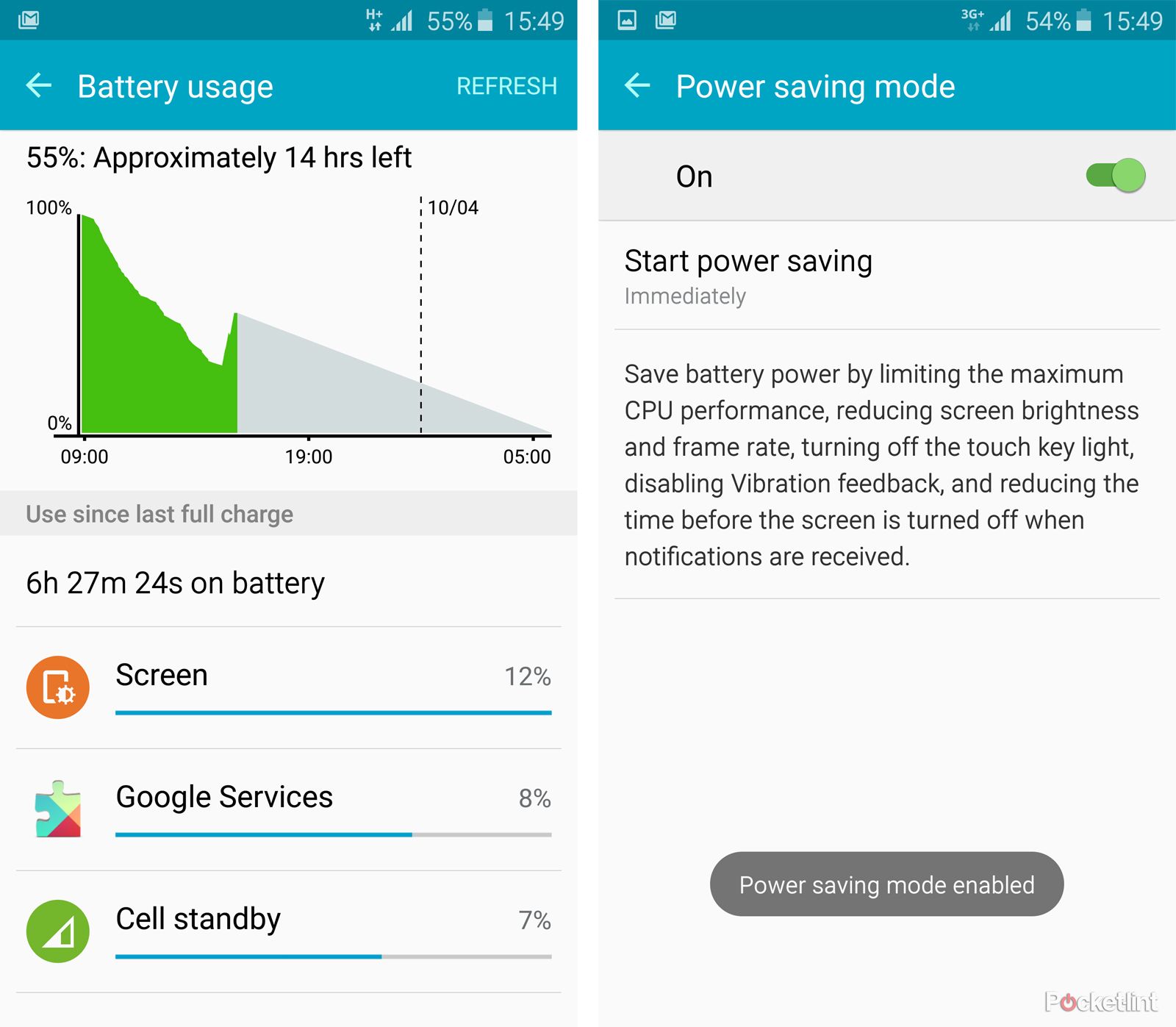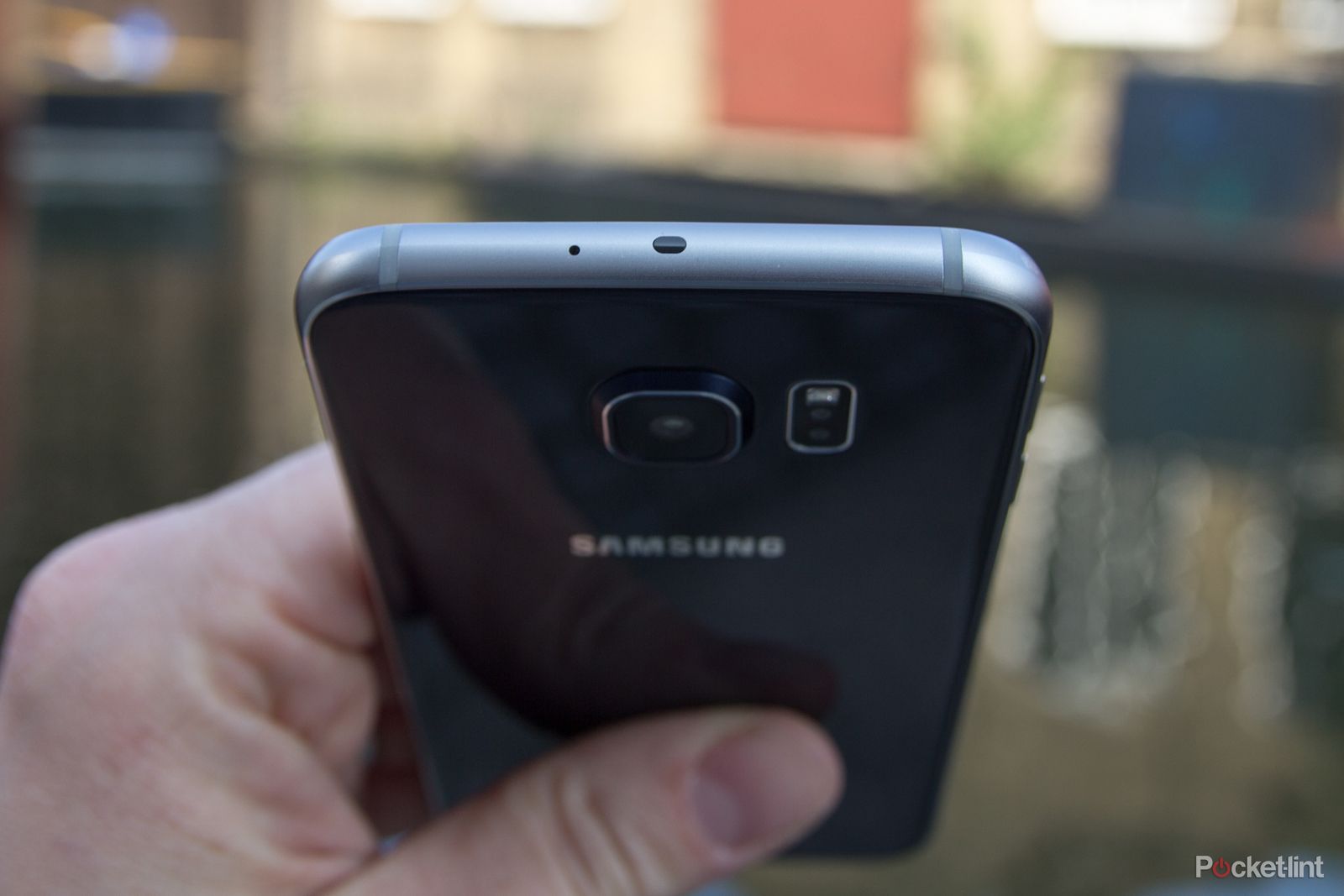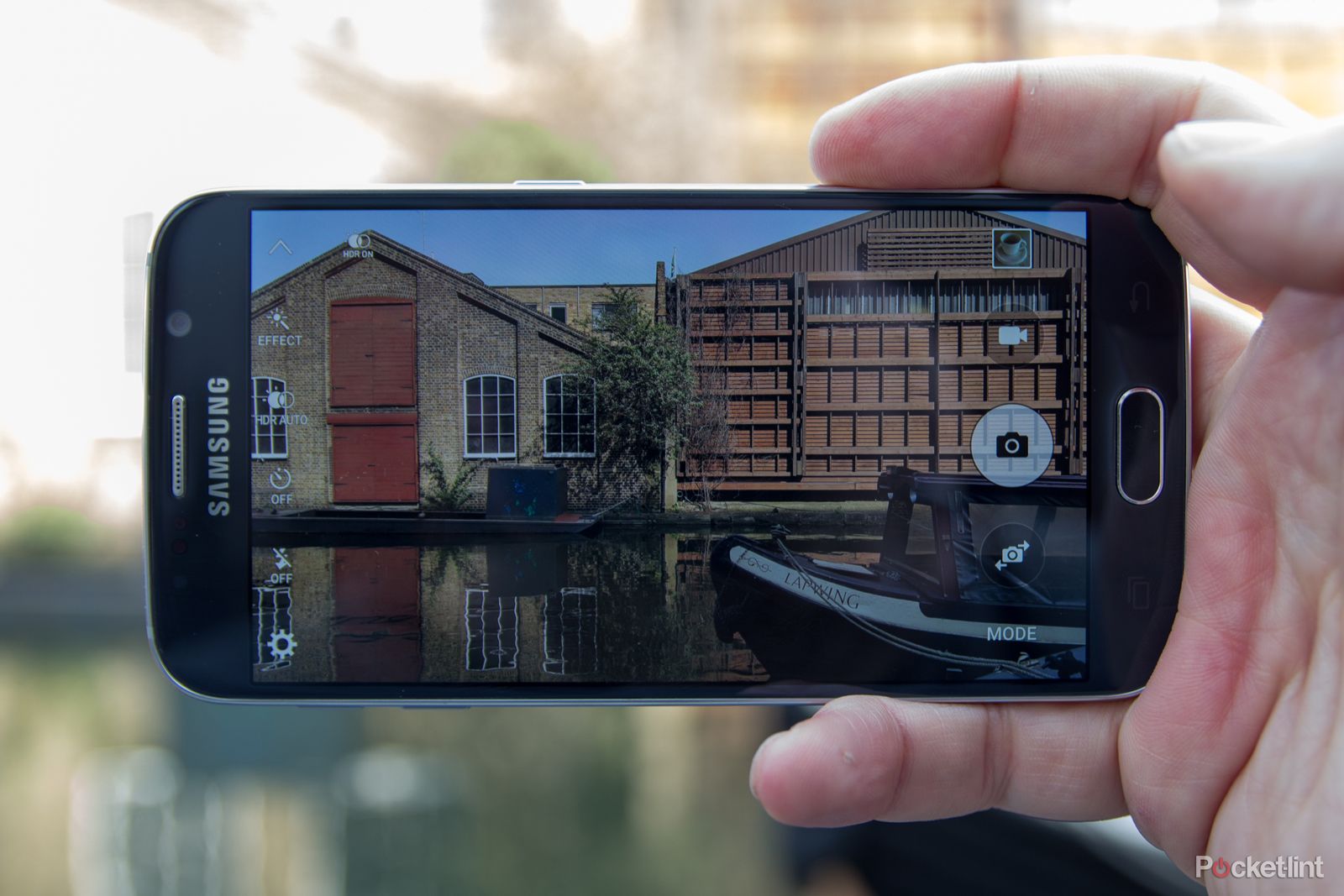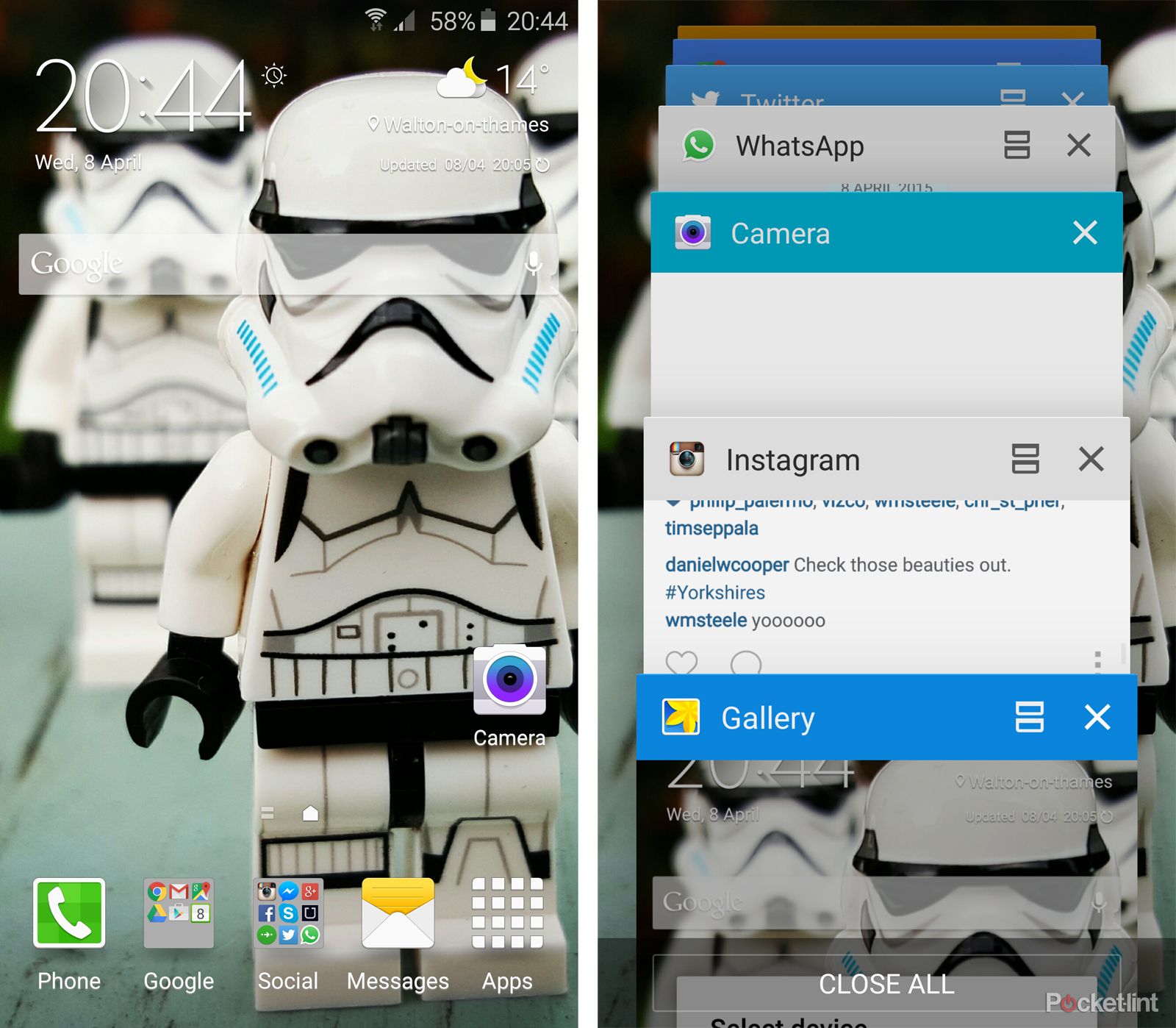The Samsung Galaxy S6 is the best Samsung smartphone ever made. Now that's an easy statement to make when it's the newest device to hit the market, but speaking relatively, we think it's the best to launch since the Samsung Galaxy S II fluked its way into favour in 2011.
Our quick take
The Samsung Galaxy S6 is a phone that ushers in change on a number of levels. Its new design could have been a disaster, but Samsung needed change, it needed to refresh its flagship Galaxy line, and the SGS6 is the embodiment of that.
There's an excellent camera, powerful hardware combined with a snappy user interface that's less intrusive than it has been in the past, and the new design is a resounding success. The sum of all these parts is an exciting handset that performs at the highest level, just as a flagship should.
There are some inherent weaknesses though. The battery life is on the weak side and the new design has meant sacrifices, such as no waterproofing and the loss of both the microSD card and removable battery. The boost of the display to Quad HD resolution reads like an impressive feat, but doesn't really give significantly visible benefits over a Full HD display at this scale.
And let's not forget the Samsung Galaxy S6 edge, which will draw more attention thanks to its sumptuous curved screen edges. That might be the model with a dab more innovation and a showy but non-essential feature, but choosing the more conventional of the two handsets in the SGS6 and pocketing the £160 premium is likely the smarter move.
With that in mind, the Samsung Galaxy S6 is not only Samsung's strongest phone to date, it's the strongest Android handset we've seen so far in 2015.
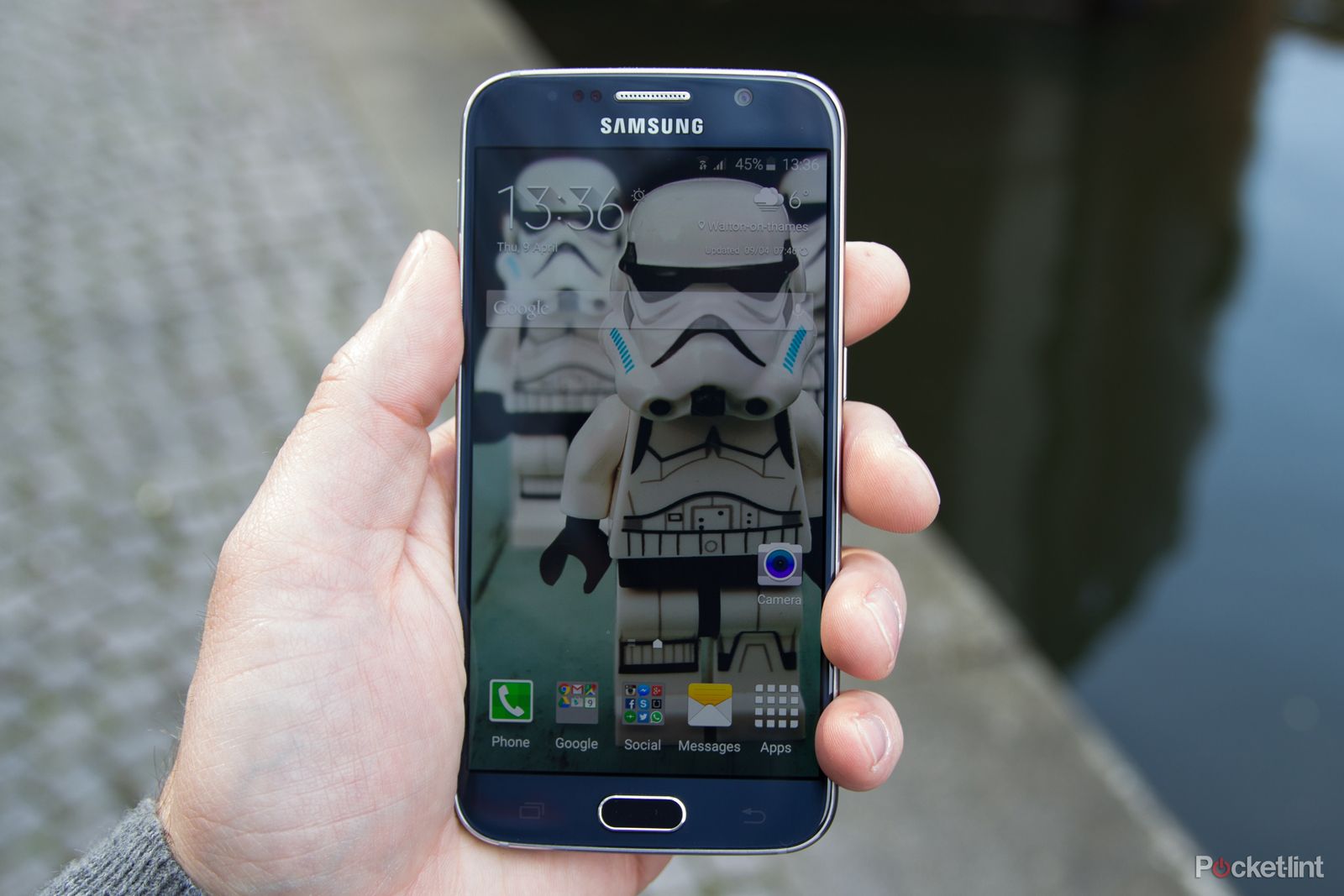
Samsung Galaxy S6 - 5.0 / 5
| FOR | AGAINST |
|---|---|
|
|
Although the S6 stands to be outshone by its edgy cousin, the S6 edge, it brings excitement back to the conventional Galaxy line that the S4 and S5 arguably lacked. The resulting pair of smartphones show that Samsung isn't resting on its laurels, but stepping up a gear.
Samsung had faced criticism and has responded. So is the Galaxy S6 the best smartphone of 2015 or does the new design mean new pitfalls?
Design: Learning lessons
Samsung's smartphone design had got a little boring: home button, chrome-effect surround, plastic back. The history of Samsung's smartphones exhibit those details and it wasn't until the Galaxy Alpha that it tried something different.
In the Galaxy S6 there isn't a huge departure to Samsung layout on the front of the device: the display is still framed by metal, the home button is still there; one glance and you'll know it's a Galaxy handset. But there is much more to it on the S6.
The frame is now a metal edge that borders a Gorilla Glass front and back. It's seamless and has a detailed profile that adds some soft ridges, bearing more than a passing resemblance to the Apple iPhone 6 across the bottom, with its drilled speaker grille and connections.
But there's some real attention to detail here. The fine drop as the glass meets the metal edge, the small chamfered ends to that border, the plastic interior around the Micro-USB connection. They lend the SGS6 a premium finish that a flagship deserves, and that previously lacked.
The bump of the camera on the back might annoy some, but the thin body at 6.8mm is easy enough to hold without that bump getting in the way. It measures 143.4 x 70.5 front-on, and for a device with a 5.1-inch display, those are pretty good proportions. It lacks the sculpting around the rear that you'll find on a device like the HTC One M9, but the S6 sits a little more stable on a desk as a result and feels no less luscious in the hand.
The choice of materials means that the SGS6 can be a little slippery though. It doesn't offer the grip of the M9 or Moto X, or even Samsung's older plastic backed devices, but we'd rather take the premium look and feel. The 138g weight is nice and light too.
However, with the change in design come some losses: there's no removable battery, no microSD storage expansion, and no waterproofing. Those might be major advantages to swipe aside and it's the loss of storage expansion we feel most keenly: we can't just throw in our card full of content and we can't really see why a tray couldn't have been included.
But on the battery front we don't mind so much. We haven't carried a spare battery since our 2007 BlackBerry Curve, but some will see this as a downside. Perhaps the LG G4 will bring salvation for battery switching aficionados.
Overall though, the SGS6 feels like a change for the better. If losing those elements was necessary to reinvigorate the Galaxy flagship, then so be it.
Fingerprint fame
Fingerprint scanners on phones have a chequered history. Although not the first to feature a scanner, Apple's integration of its TouchID technology into its devices' home buttons made it seamless and unintrusive. Samsung has now followed suit, offering a fingerprint scanner that's usable, unlike the swipe version on the Galaxy S5.
The S5 suffered because swiping was too fiddly, particularly with a one-handed hold in relation to the home button's position. But on the SGS6, it's more direct and immediate. Rather than having to tap in your code, your fingerprint will do it with a touch. The tech is as reliable as Apple's version and having put the two side-by-side, there's little difference in the experience in terms of speed and reliability.
If nothing else, for those who like to fiddle with their phone a lot, the new fingerprint security makes it really quick to access your device. In addition it will bring future benefits, such as secure PayPal payments, with Samsung Pay details yet to be confirmed.
Display
The Samsung Galaxy S6 has a 5.1-inch display with a 2560 x 1440 pixel resolution, striking a 576ppi pixel density. That makes it one of the sharpest displays at this size: it offers a resolution boost over the majority of 5-inch devices, pushing the pixel density up into realms we've yet to see, quite literally (in terms of UK handsets anyway).
That's great from a technical point of view and looks good on the spec sheet, but it's difficult to see where the increased resolution really gets put to use. Your favourite apps don't offer increased detail because at this size it's difficult to discern the difference from Full HD in daily use. However, at this resolution, and now in a similar software format to the Galaxy Note 4, the multi-window software possibilities retain plenty of detail even when condensed into half the available screen space.
But a display isn't just a story about resolution. The Samsung Galaxy S6 has a Super AMOLED display, familiar to users of Samsung's mobile devices. That means punch and vibrancy to colours sits slightly on the far edge of realism. You can tweak the display settings, but invariably these step further away from reality rather than closer to it. However, things are better balanced than they've been on some previous devices.
There's plenty of brightness to give those images pop, and great contrast too, which is one of the strengths of AMOLED. If pushing detail through though pixels doesn't quite excite us, then the punchy highlights set against inky blacks do. The downside is that pure whites are sacrificed, giving way to a slightly yellowed version of white when compared to LCD rivals. That's the compromise you just have to accept.
The viewing angles are also great and Samsung also hasn't fallen foul of polarising layer dimming. If you're wearing polarised sunglasses, you can see the display both in portrait and landscape, which is a point where the HTC One M9 fails (becoming almost invisible in landscape).
It's also worth noting that Samsung still uses off-screen navigation controls, with a physical home button that protrudes from the device. That means that, and unlike many Android devices, you don't lose a section of the display to navigation controls, so you feel like you're getting the most out of the display.
Hardware and performance
One of the big headlines for tech geeks is that Samsung has stepped away from Qualcomm and equipped the SGS6 with its own Exynos hardware instead. That's not such a strange situation as there have been Exynos variants in both Galaxy smartphones and Note devices previously.
Here you have a 64-bit octa-core chipset with 3GB of RAM. It's clocked at 2.1 and 1.5GHz, similar to Snapdragon 810 devices we've seen previously, such as on the One M9 and LG G Flex 2. However, it feels faster. Where some might have worried about Samsung flying solo, those concerns seem unfounded, as the Samsung Galaxy S6 is slick and fast in all things.
There's snap and speed to Samsung's user interface that hasn't really been there before. Opening apps is really fast - fire up an intensive game like Real Racing 3 and delays are kept to a minimum. Even start-up is faster than rival devices, so you'll be using your phone before others have skipped past their manufacturer's logo.
Under load the SGS6 will warm up. Fire up a graphically intensive game and you'll feel the warmth around the back as you will with any other device, but it's never excessive.
We've mentioned the loss of the microSD, so with that in mind you'll want to think about internal storage capacity. The SGS6 starts with a 32GB option, which is a step forward from the 16GB devices of the past, so there's plenty of space for apps and games, as well as other content. Pricier 64GB and 128GB variants are also available.
Battery life
The Samsung Galaxy S6 has a 2,550mAh battery. That capacity is a little on the low side by modern standards and we suspect that's where Samsung took the hit to achieve the skinny dimensions. You might not get a removable battery, but it does support wireless charging.
Wireless charging perhaps hasn't been as widely adopted as some might like, but Samsung's approach is the right one: rather than choosing sides, it supports both the common standards (WPC and PMA). We dropped it onto a Nokia wireless charging pad we had in the office (necessary as the S6 doesn't come with a wireless charger) and found it charged with no problems.
It also supports fast charging and although this won't be Qualcomm's Quick Charge 2.0 (as commonly found in many other devices), we found it charged quickly with a Quick Charge 2.0 charger - again, that's a win for compatibility, regardless of Samsung doing its own thing. You even get a notification that it's fast charging, which is useful.
But it's in the battery life that Samsung sees its main weakness. We expected to see greater endurance from octa-core chipsets, but so far that doesn't seem to be exceeding the increased demands. Low power applications tick over with minimal consumption, but fire up those intensive apps and you're back to draining the battery quickly.
On a light day you'll make it through to bedtime without a problem, but as with most flagship devices, heavy days will see you running dry as you approach mid afternoon or early evening. Samsung doesn't have the same aggressive and granular power saving that Sony offers - the Xperia Z3 offering great battery performance - instead offering milder power saving modes instead.
Of course the display will be pulling a chunk of life with its increased resolution and we're left wondering how much better things might have been if Samsung had stuck to a Full HD panel instead. The bottom line is that you'll be needing fast charge and ad hoc wireless charging if you're driving the SGS6 hard.
Sound and connectivity
The Samsung Galaxy S6 has one speaker on its base. There's plenty of volume but it lacks the skill of front-facing speakers you'll find elsewhere, especially when it comes to watching movies. It's also fairly easy to cover it over by accident with a hand.
You'll need your headphones to get the best sound performance. There are a couple of additional settings too, such as SoundAlive+, which designed to recreate surround sound, but that would occasionally and inexplicably shift the volume levels when listening to Spotify. So that's probably best avoided.
The ear speaker to the top of the phone sounds good, so we had no problem making and receiving calls, although the reception isn't the strongest around. We found that the SGS6 didn't give us a connection as strong as some rivals when out and about and sometimes drags its heels about reconnecting when you emerge from a dead spot.
There is Wi-Fi calling, however. This feature allows hand-off of cellular functions to Wi-Fi networks without using any additional apps. That means that if you're in a weak reception area (or underground) you can make calls as normal if you have a good Wi-Fi connection - as long as your network supports it. We've tested it on EE and it works just fine, but you'll need an EE variant device to get that function.
Interestingly, one of the omissions on the SGS6 is MHL (Mobile High-Definition Link) and DLNA (Digital Living Network Alliance) support. These features are gone, but there's plenty of other options for wireless connectivity. Although you can't natively access network content you might have, you can still share easily enough from your device, to your Xbox One for example.
Camera class
The Galaxy Note 4 is often lauded as the best of the Android bunch when it comes to the camera. It really is very good and Samsung is looking to repeat that trick with the SGS6, which is equipped with a 16-megapixel rear sensor, f/1.9 lens and optical image stabilisation combination.
The feature we like the most, however, is the double-tap action on the home button. This will launch the camera from sleep and it's really fast to do so.
Focusing and capture is fast too, very much a repeat of the experience of the Note 4. It slows in low light, often needing a helping touch when dealing with macro shots in dim conditions, whereas the LG G3 excels.
In normal light the SGS6 gives you pictures true to the scene in front of you. Without delving into settings or modes, or fiddling around, the SGS6 gives great point-and-shoot results, consistently and reliably.
As you get close to light sources lens flare is something of a problem and as the light dips you'll get some grain coming in due to image noise, but it's well controlled, so it doesn't mar your pictures. That means indoor pictures in daylight come out well, while low-light snaps, aside from the inherent slow focusing when taking the picture, still look good enough. In short, the SGS6 knocks the socks off the HTC One M9.
The front facing camera is a 5-megapixel offering and can take reasonable selfies. It's not as adept with detail as the HTC One M9's UltraPixel sensor (a flip of roles as front and back cameras are turned), but at least you'll look natural in shots - so long as you remember to dial down the face-smearing beauty feature. Low-light performance isn't great from this front camera, however, as noise reduction wipes out detail.
Then there's video, with the rear camera offering 4K UHD capture, in addition to Full HD at 30/60fps, along with a range of other modes, including an easy to use (Apple-aping) slow-motion function.
As an all-rounder, the Samsung Galaxy S6 is a great performer in the camera department and it's given us some wonderful results with minimal fuss, which is exactly what you want from a smartphone camera.
Sensitive software
Samsung has a reputation for its TouchWiz user interface riding roughshod over Android, giving you a slightly cartoony experience that's been slow to evolve. That might be a harsh assessment, but we've seen Samsung moving to improve this experience and the SGS6 does just this.
There's been a gradual reduction in bloatware and although there's still a range of added apps - like Microsoft's OneNote, OneDrive and Skype - it doesn't feel quite like the duplication dump it was in the past. Yes, you get a second internet browser in addition to Chrome and no, you irritatingly can't remove it.
Samsung's rampant creation of "S" apps seems to have calmed a bit too. S Voice has taken a back seat and S Planner (calendar) is ok. But then Google's apps have been improving and dropping Samsung's slightly gaudy Messages app and S Planner for stock Android alternatives is easy to do. Google's apps are now rather elegant, so why not?
Samsung's adherence to Lollipop conventions isn't quite as strong as HTC's is in Sense 7 and we miss features like the two-finger swipe to get to Quick Settings. Although Samsung provides plenty of hardware toggles (and has done for ages), having to scroll left and right can be a pain and we can't help feeling the S Finder and Quick Connect options waste a little too much space in the notifications pane.
Samsung hasn't adopted Android 5 Lollipop's interruptions system entirely, although you can still assign priority apps to bust through the "do not disturb" function. It's slightly irritating that you can't silence the phone using the volume controls - it only runs down to vibrate - but you can at least adjust the volumes of media, notifications, ringtone, and system sounds at any time.
However, we've found this new, flatter, cleaner, TouchWiz interface to be fast and stable. The parallax effect in launcher - which shows the icons moving relative to the background in a 3D effect - has a very Apple feel to it, but we like it. A long press on the recent apps button to enter multi-windows mode is also genuinely useful, as we highlighted earlier.
There's room for improvement, of course, but the Samsung Galaxy S6's iteration of TouchWiz feels more accepting to change than it has done in the past and Android's native refinement makes for a combination that's stronger than ever.
To recap
The Samsung Galaxy S6 is a excellent smartphone. Samsung needed change and the S6 brings it by the bucketload. There's performance at plenty of levels, with lots of power and a great camera, with a UI that's more refined than ever. The battery life isn't the strongest however and it might be outshone by its cousin, the S6 edge.

